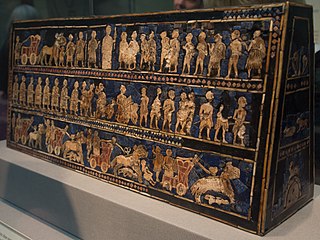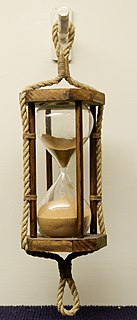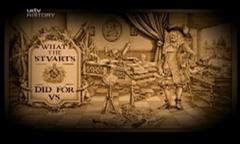
Physics is a branch of science whose primary objects of study are matter and energy. Discoveries of physics find applications throughout the natural sciences and in technology. Physics today may be divided loosely into classical physics and modern physics.

A microscope is a laboratory instrument used to examine objects that are too small to be seen by the naked eye. Microscopy is the science of investigating small objects and structures using a microscope. Microscopic means being invisible to the eye unless aided by a microscope.
The Scientific Revolution was a series of events that marked the emergence of modern science during the early modern period, when developments in mathematics, physics, astronomy, biology and chemistry transformed the views of society about nature. The Scientific Revolution took place in Europe starting towards the end of the Renaissance period, with the 1543 Nicolaus Copernicus publication De revolutionibus orbium coelestium often cited as its beginning.

Ancient history is the aggregate of past events from the beginning of writing and recorded human history and extending as far as late antiquity. The span of recorded history is roughly 5,000 years, beginning with the Sumerian cuneiform script. Ancient history covers all continents inhabited by humans in the period 3000 BCE – 500 CE. The three-age system periodizes ancient history into the Stone Age, the Bronze Age, and the Iron Age, with recorded history generally considered to begin with the Bronze Age. The start and end of the three ages varies between world regions. In many regions the Bronze Age is generally considered to begin a few centuries prior to 3000 BCE, while the end of the Iron Age varies from the early first millennium BCE in some regions to the late first millennium CE in others.

Adam John Hart-Davis is an English scientist, author, photographer, historian and broadcaster. He presented the BBC television series Local Heroes and What the Romans Did for Us, the latter spawning several spin-off series involving the Victorians, the Tudors, the Stuarts and the Ancients. He was also a co-presenter of Tomorrow's World, and presented Science Shack.
Local Heroes is a science and history television programme in the United Kingdom, presented by Adam Hart-Davis.

Evangelista Torricelli was an Italian physicist and mathematician, and a student of Galileo. He is best known for his invention of the barometer, but is also known for his advances in optics and work on the method of indivisibles. The Torr is also named after him.

The history of the telescope can be traced to before the invention of the earliest known telescope, which appeared in 1608 in the Netherlands, when a patent was submitted by Hans Lippershey, an eyeglass maker. Although Lippershey did not receive his patent, news of the invention soon spread across Europe. The design of these early refracting telescopes consisted of a convex objective lens and a concave eyepiece. Galileo improved on this design the following year and applied it to astronomy. In 1611, Johannes Kepler described how a far more useful telescope could be made with a convex objective lens and a convex eyepiece lens. By 1655, astronomers such as Christiaan Huygens were building powerful but unwieldy Keplerian telescopes with compound eyepieces.
The Accademia dei Lincei is one of the oldest and most prestigious European scientific institutions, located at the Palazzo Corsini on the Via della Lungara in Rome, Italy.

The history of technology is the history of the invention of tools and techniques and is one of the categories of world history. Technology can refer to methods ranging from as simple as stone tools to the complex genetic engineering and information technology that has emerged since the 1980s. The term technology comes from the Greek word techne, meaning art and craft, and the word logos, meaning word and speech. It was first used to describe applied arts, but it is now used to describe advancements and changes which affect the environment around us.
Optics began with the development of lenses by the ancient Egyptians and Mesopotamians, followed by theories on light and vision developed by ancient Greek philosophers, and the development of geometrical optics in the Greco-Roman world. The word optics is derived from the Greek term τα ὀπτικά meaning "appearance, look". Optics was significantly reformed by the developments in the medieval Islamic world, such as the beginnings of physical and physiological optics, and then significantly advanced in early modern Europe, where diffractive optics began. These earlier studies on optics are now known as "classical optics". The term "modern optics" refers to areas of optical research that largely developed in the 20th century, such as wave optics and quantum optics.

What the Ancients Did for Us is a 2005 BBC documentary series presented by Adam Hart-Davis that examines the impact of ancient civilizations on modern society.

A thermoscope is a device that shows changes in temperature. A typical design is a tube in which a liquid rises and falls as the temperature changes. The modern thermometer gradually evolved from it with the addition of a scale in the early 17th century and standardisation through the 17th and 18th centuries.

The history of timekeeping devices dates back to when ancient civilizations first observed astronomical bodies as they moved across the sky. Devices and methods for keeping time have since then improved through a long series of new inventions and ideas. Sundials and water clocks originated from ancient Egypt, and were later used by the Babylonians, the Greeks and the Chinese; medieval Islamic water clocks were unrivalled in their sophistication until the mid-14th century. Incense clocks, which may have been invented in India, were being used in China by the 6th century. The hourglass, one of the few reliable methods of measuring time at sea, was a European invention and does not seem to have been used in China before the mid-16th century.

What the Tudors Did for Us is a 2002 BBC documentary series that examines the impact of the Tudor period on modern society.

What the Industrial Revolution Did for Us is a BBC documentary series produced in conjunction with the Open University that examines the impact of the Industrial Revolution on modern society. It was originally broadcast on BBC Two from 7 October to 11 November 2003.
This article outlines the history of Canadian technological invention. Technologies chosen for treatment here include, in rough order, transportation, communication, energy, materials, industry, public works, public services, domestic/consumer and defence technologies.

A projector or image projector is an optical device that projects an image onto a surface, commonly a projection screen. Most projectors create an image by shining a light through a small transparent lens, but some newer types of projectors can project the image directly, by using lasers. A virtual retinal display, or retinal projector, is a projector that projects an image directly on the retina instead of using an external projection screen.













